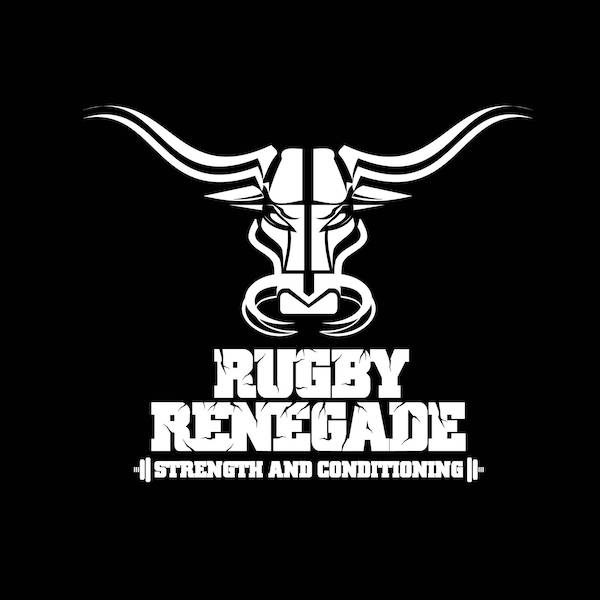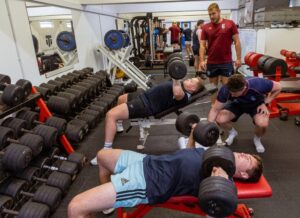There is tons of rugby strength and conditioning information on the internet but unfortunately some of it, whilst of the best intentions, isn’t the best advice to follow. We pride ourselves at Rugby Renegade as delivering common sense, effective and proven at a high level training advice, so here are our 6 things you should forget you’ve seen about rugby strength and conditioning…
Agility Ladders
 As cool as they look on instagram agility ladders aren’t the best way to build speed and agility for rugby. Ladders teach some bad habits like looking down at your feet the whole time and fail to teach you to develop force through the floor. At best they could be used for a warm up.
As cool as they look on instagram agility ladders aren’t the best way to build speed and agility for rugby. Ladders teach some bad habits like looking down at your feet the whole time and fail to teach you to develop force through the floor. At best they could be used for a warm up.
So whats a better approach? Try strength training including both bilateral and unilateral exercises, power training and plyometrics for a start. Then your agility work should include reactivity to external stimulus; defenders the ball etc. Leave the ladders for the window cleaners!
Sport Specific Exercises
You can see why people fall into this trap. They want to improve sports skills, the speed and power by which they are produced. The problem is these exercises often lead to using lighter loads and moving slower than the actual sporting actions. Despite trying to build transfer onto the pitch we actually miss the target or at worst reduce skill level.
It is also overloading movement patterns that are already used a lot in the sport and we risk overuse injuries if we then load these movements further and under greater load. These exercises also tend to take time away from the big bang for your buck exercises and thus you reduce progress in these.
If we increase our squatting strength however, a very general movement skill, we have increased our potential to perform sports specific movements using greater force. It is not the squat itself that we want to improve but the neuromuscular ability of the lower body, the squat is just the tool we use to achieve greater force output.
All we need to do then is practice our sports skills with our rugby coaches, work on technique and the transfer to the pitch will come. Let’s stick to the basics of lifting heavy, jumping, sprinting and practicing our skills!
Long Slow Distance Training
Hopefully this shouldn’t take too much explaining! Long slow distance training makes you good at running long and slow distances! Rugby requires speed, power and agility repeated for relatively short periods of time with periods of recovery. So you should train like that right?!
For best results use a combination of MAS training, repeated sprint sessions and of course rugby training should play a large part in you fitness programme. You can get away with doing 20-30mins on a wattbike but kick the long slow distance running to touch!
“Altitude” Masks
Despite the claims of the altitude mask makers they don’t really simulate altitude. The best thing they are for is a Bane impression! Even athletes that do use altitude to enhance performance get better results when they train at low altitude and live at high altitude. The reason being intensity.
Because of the demands of altitude you can’t maintain intensity and there is a massive drop off in performance. If the whole point of training is to increase the level of intensity you can perform and then maintain it for as long as possible, why would you train at a lower intensity?
Altitude masks might make a session seem harder but your intensity will drop and make it pointless. Save it for halloween.
High Rep Olympic Lifts
If you follow us much you’ll know we love crossfit and the olympic lifts! We don’t however use the olympic lifts like some crossfitters do. ie. with high reps. We prefer to focus on using the olympic lifts to develop power so low reps performed as explosively as possible is needed with adequate rest.
We do use low reps sets of olympic variations in conditioning workouts but it is important to keep the reps low because again we want to build the ability to repeat explosive efforts not just do as many reps as possible. The risk of injury is too great and form will break down when fatigued.
Crossfitters can get away with high rep olympic lifts because that is their sport; they need to do it in competition. Rugby players don’t! Remember use the olympic lifts to build your power!
Low Carb Diets
It’s a big fall out from the seeming success of diets like the Atkins Diet that drastically reduce carbohydrate that people think you have to restrict carbs to lose bodyfat. In reality both low carb and low fat diets work because they reduce overall calorie intake.
The problem is, and we’ve seen it a lot, that because of the hype players reduce carbs (often at the end of the season ready for the beach!) and sacrifice performance because they don’t have carbs to fuel and recover from training and games.
A better approach is to have carbs present at all times but good forms of carbs like brown rice, sweet potatoes, quinoa etc. and prioritise them around your high intensity sessions. If you are looking to get lean at the end of the season you’ve probably left it too late and if you reduce carbs now your training performance will reduce thus reducing your ability to burn fat.
Conclusion
So there you have it! 6 things you shouldn’t waste your time on if you want to improve your performance for rugby. Let’s hope they get condemned to Room 101! Let us know if you’ve tried any of these or your coach makes you do them? You might want to think about joining our programme…




